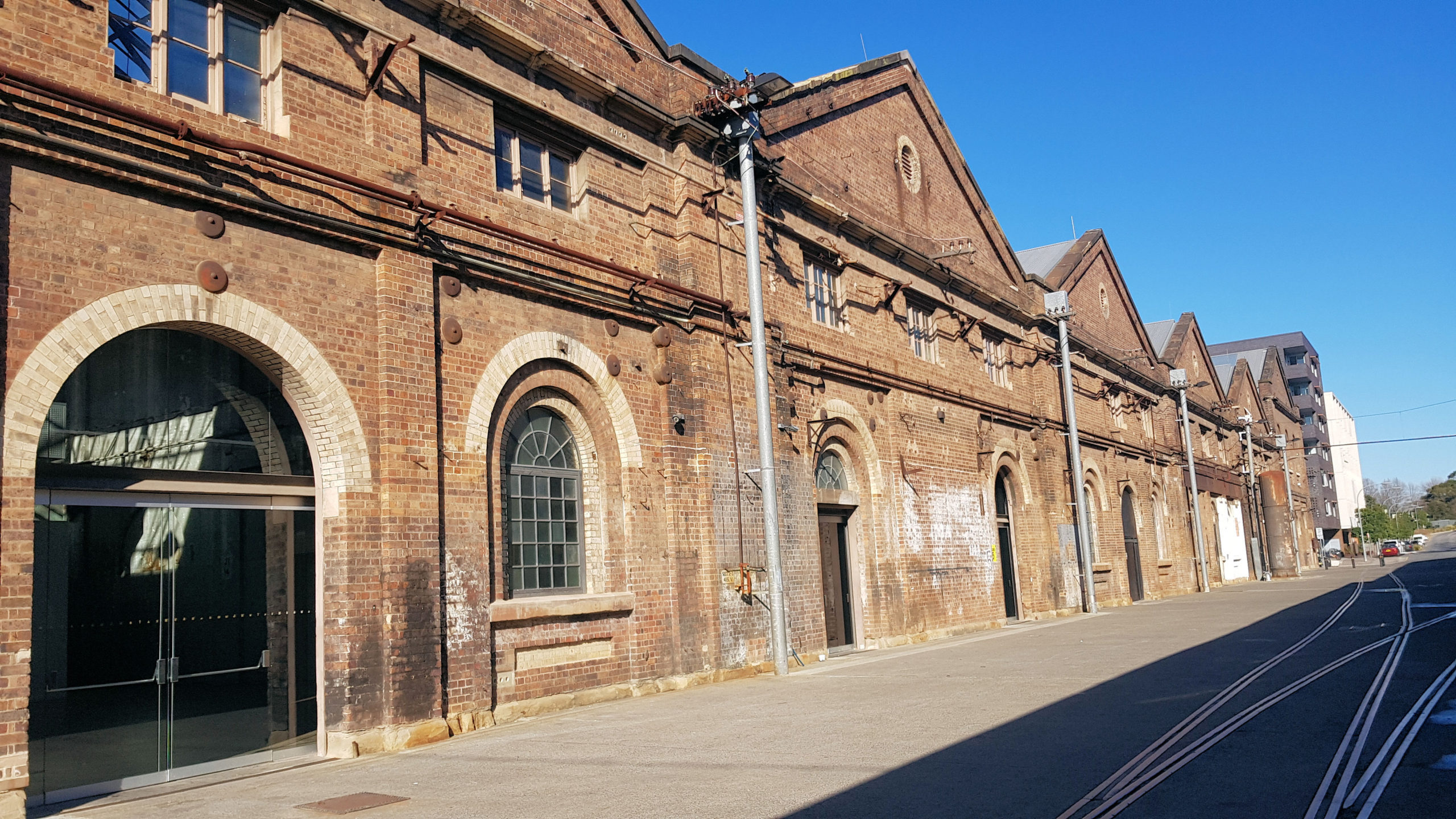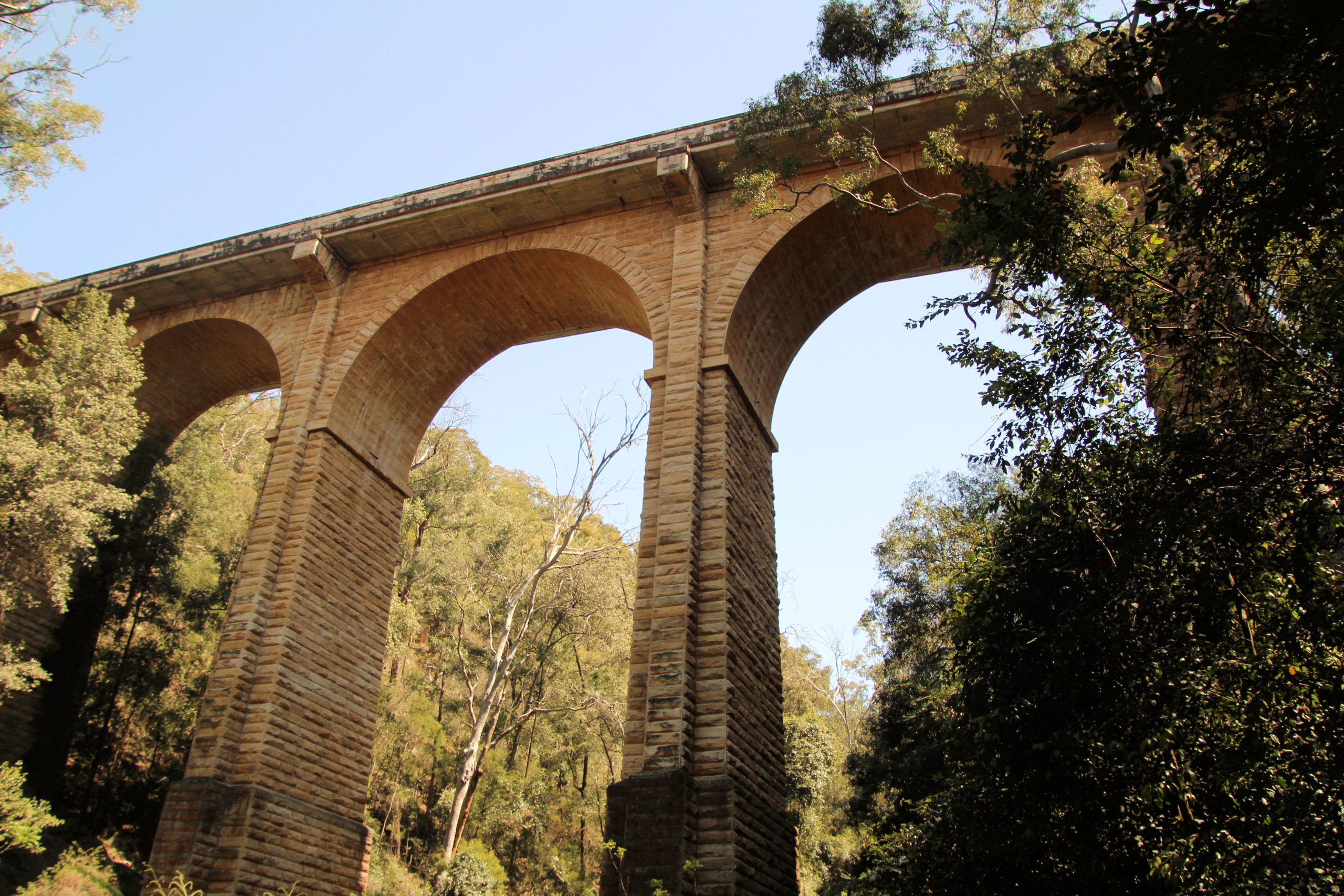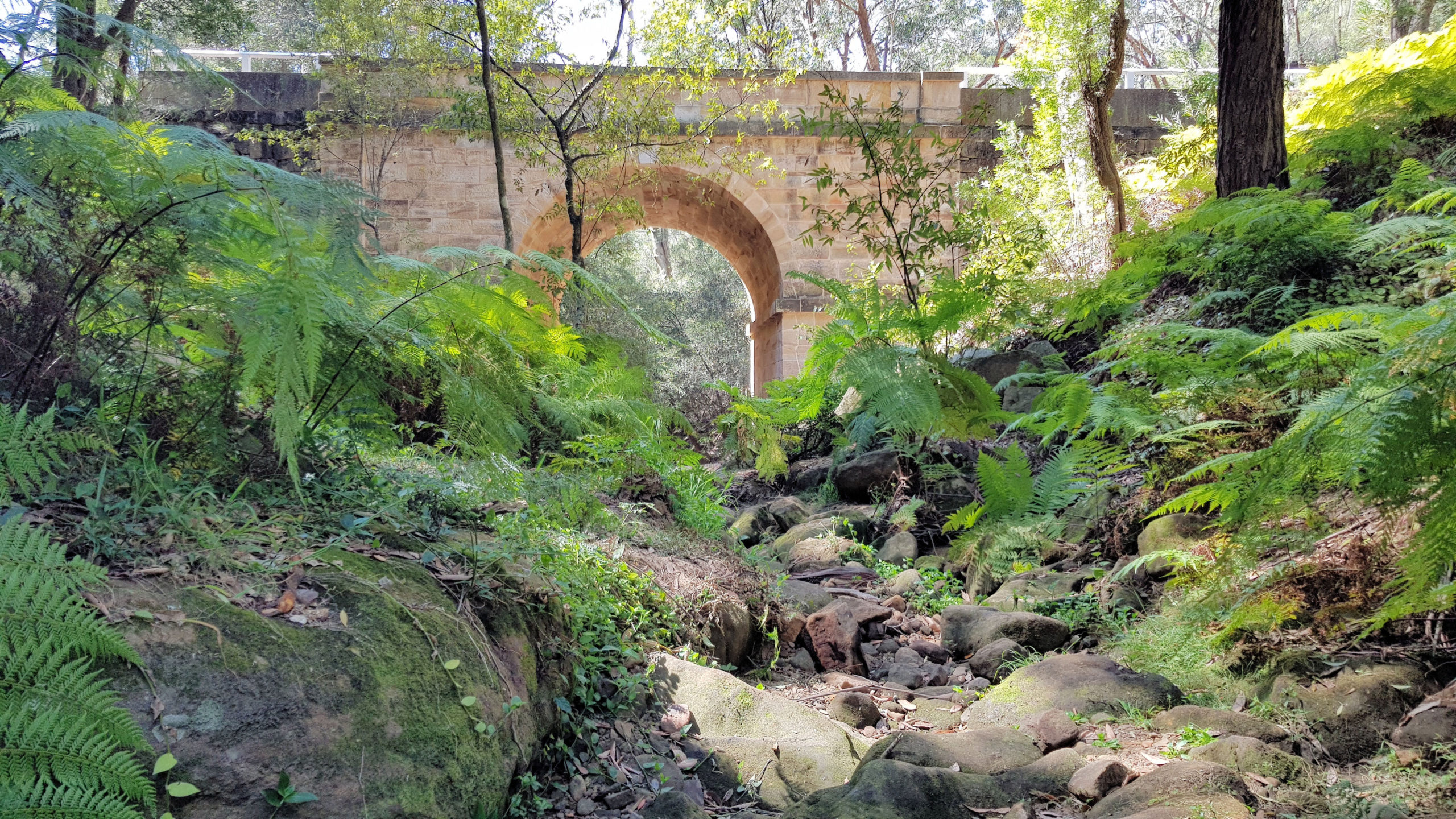Category: New South Wales
-
Carriageworks Eveleigh Sydney

We have spent a lot of time on the trains into Sydney and always gone past this area, without thinking too much about what it had to offer. Converted from old railway workshops, Carriageworks, located at Eveleigh, is now a huge display centre for artists and engages artistic and audiences with contemporary ideas and issues.… Read more
-
Knapsack Gully Viaduct Lapstone Zig Zag Railway

The Viaduct’s History Designed by John Whitton, The Knapsack Gully Viaduct once formed part of the the Lapstone Zig Zag , which climbed the eastern side of the Blue Mountains to Glenbrook. The construction stands 40 metres high. and 118 metres long, making it an impressive structure when viewed from below. Originally used for rail… Read more
-
Lennox Bridge – Blue Mountains

Lennox Bridge in the Blue Mountains Located in the foothills of the Blue Mountains, Lennox Bridge (or the Horseshoe Bridge) is the oldest surviving stone arch bridge in Australia, If you are in the area it is worth a quick stop off the Great Western Highway. A parking bay allows you to park away from… Read more